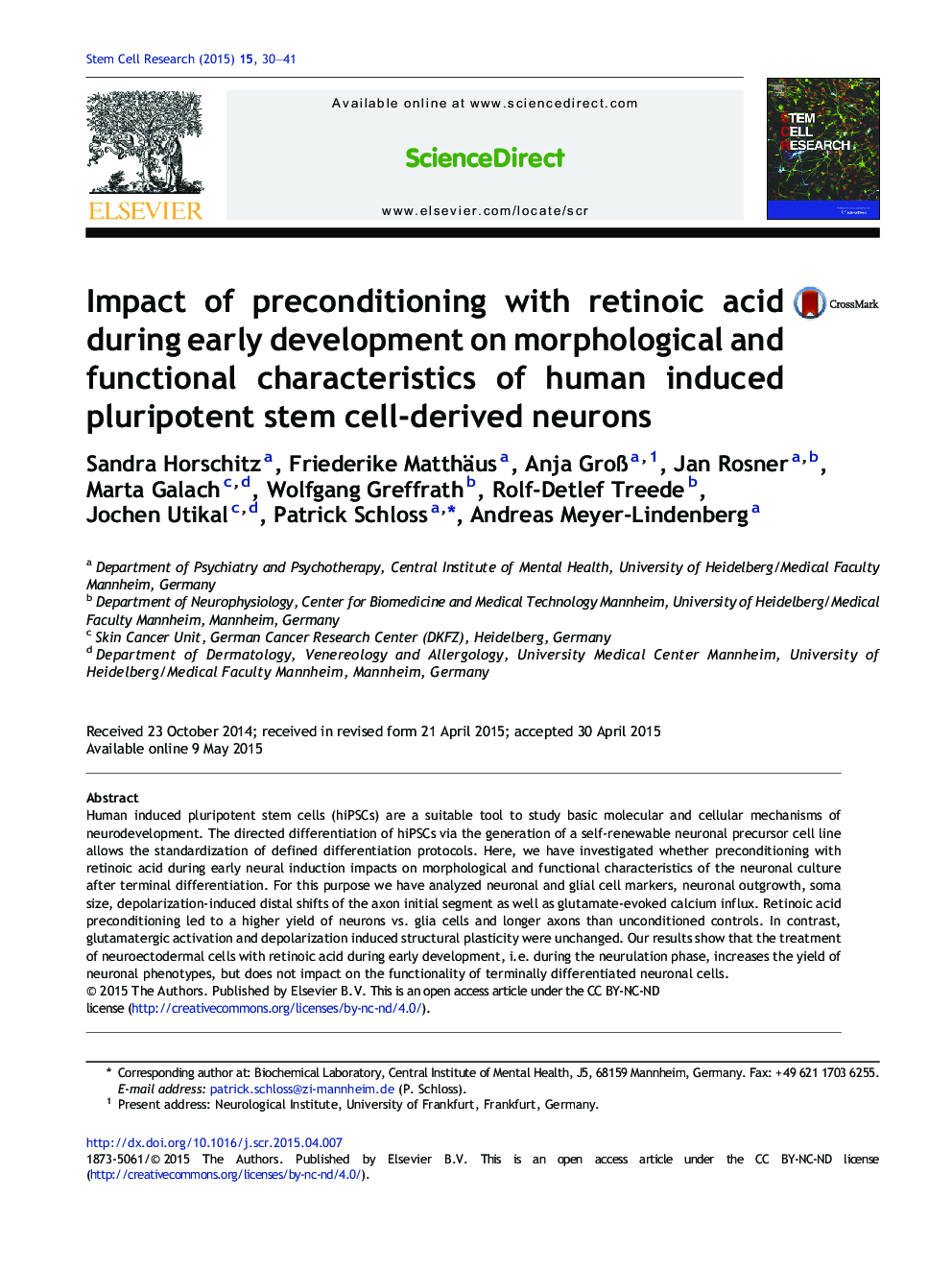| Article ID | Journal | Published Year | Pages | File Type |
|---|---|---|---|---|
| 2094069 | Stem Cell Research | 2015 | 12 Pages |
•Self-renewable NPC lines were generated from a hiPSC line.•Retinoic acid preconditioning increases the yield of neuronal phenotypes.•A depolarization-induced AIS shift was observed in hiPSC-derived neurons.
Human induced pluripotent stem cells (hiPSCs) are a suitable tool to study basic molecular and cellular mechanisms of neurodevelopment. The directed differentiation of hiPSCs via the generation of a self-renewable neuronal precursor cell line allows the standardization of defined differentiation protocols. Here, we have investigated whether preconditioning with retinoic acid during early neural induction impacts on morphological and functional characteristics of the neuronal culture after terminal differentiation. For this purpose we have analyzed neuronal and glial cell markers, neuronal outgrowth, soma size, depolarization-induced distal shifts of the axon initial segment as well as glutamate-evoked calcium influx. Retinoic acid preconditioning led to a higher yield of neurons vs. glia cells and longer axons than unconditioned controls. In contrast, glutamatergic activation and depolarization induced structural plasticity were unchanged. Our results show that the treatment of neuroectodermal cells with retinoic acid during early development, i.e. during the neurulation phase, increases the yield of neuronal phenotypes, but does not impact on the functionality of terminally differentiated neuronal cells.
